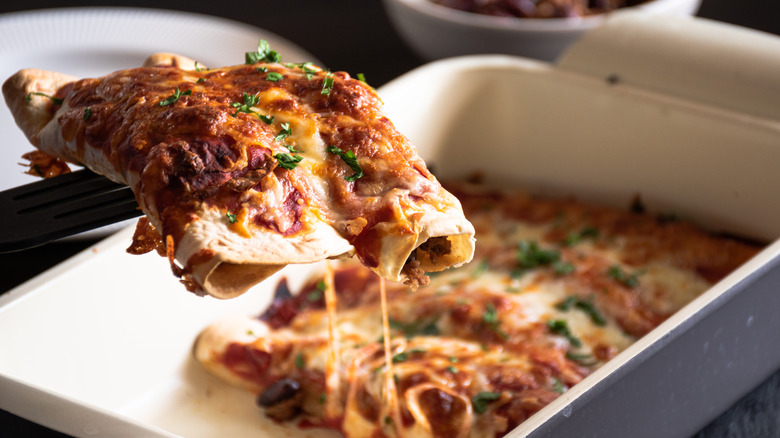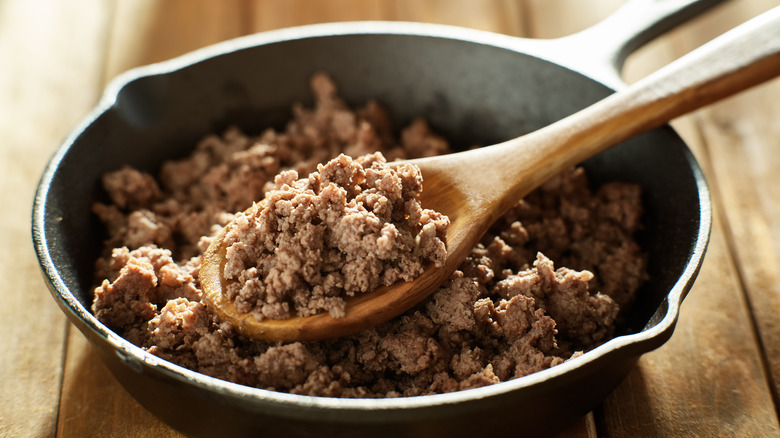Follow This Essential Step To Save Yourself From Greasy Beef Enchiladas
They may taste like the best thing since ground beef street tacos, but if your loaded beef enchiladas turn out soggy, they're a flop. Even if they get off to a good start, it's the greaseless, mess-free finish that counts. That prompts the objective to remove excess oil when making enchiladas, and the most efficient way to do that is to drain the ground beef; not draining the beef is one of our highlighted enchilada mistakes.
Ground beef is often the choice of meat for enchiladas and casseroles since it holds its moisture throughout the baking process. This holds especially true for ground beef with a higher fat-to-lean meat ratio. According to experts, the perfect blend is 80% lean ground beef (or ground chuck). As the beef cooks, it releases liquid, which means that by the time it's ready, it's swimming in fat. Use the beef mixture as is for your enchiladas, and you'll risk burdening them with this same fat. They'll come out doused with grease and soggy, and what's more frustrating than cutting into a sloppy enchilada for lunch? Plus, as much as fatty foods are soul comforts, including too much oil negates the taste experience. Thus, it's essential to drain the excess fat.
How to drain fat from beef
Beef for enchiladas is often cooked on the stovetop over medium heat. The rendered fat will be noticeable by the time the ground beef is ready and can be drained using a couple of methods. The easiest involves pouring the ground beef into a colander resting atop a container. Once you've collected the excess oil, you can transfer it into the garbage bin.
Another method involves using our turkey baster hack to easily remove grease from ground beef. Push the beef aside so that it is separated from the oil. Squeeze the turkey baster bulb, and then once placed in the oil, release it to suck the oil from the pan. Squeeze the bulb again to pour the oil into a jar. You may want to wait for the oil to cool down before doing this, however, since some basters (with glass) may not be able to withstand high temperatures.
If siphoning with a baster still leaves a considerable amount of oil in the pan, use a paper towel to dab the grease from the ground beef. After that, you can use the ground beef in your enchiladas without the risk of them turning greasy. Firm, light enchiladas will be the strong finish you hoped for when you set out to make this dish.

